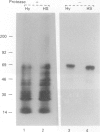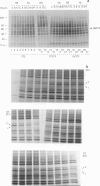Abstract
Responses both to hyperosmotic stress and to heat shock were compared in 3T3 cells, spontaneously transformed cells (ST3T3) and simian virus 40-transformed cells (SV3T3). Cell adaptation to these stresses was measured in terms of surviving cell viability and plating efficiency, while their induced synthesis of stress proteins was monitored in terms of the presence of mRNA for HSP70, the pattern of polypeptides synthesised and the accumulation of HSP70 detectable by monoclonal antibodies. All three types of cells responded similarly to heat shock in their expression of HSP70 and showed no clear differences in ability to recover. In contrast, both ST3T3 and SV3T3 cells adapted more poorly and much more slowly to hyperosmotic stress (0.5 osM incubation) than did normal 3T3 cells. This different pattern of adaptation to hyperosmotic stress was parallelled by the cells' different expression of a stress protein that could not be distinguished from the heat-induced HSP70 by any of the methods listed above. In view of these findings it seems possible that hyperosmotic treatment might be useful in selectively affecting the survival of tumour cells.
Full text
PDF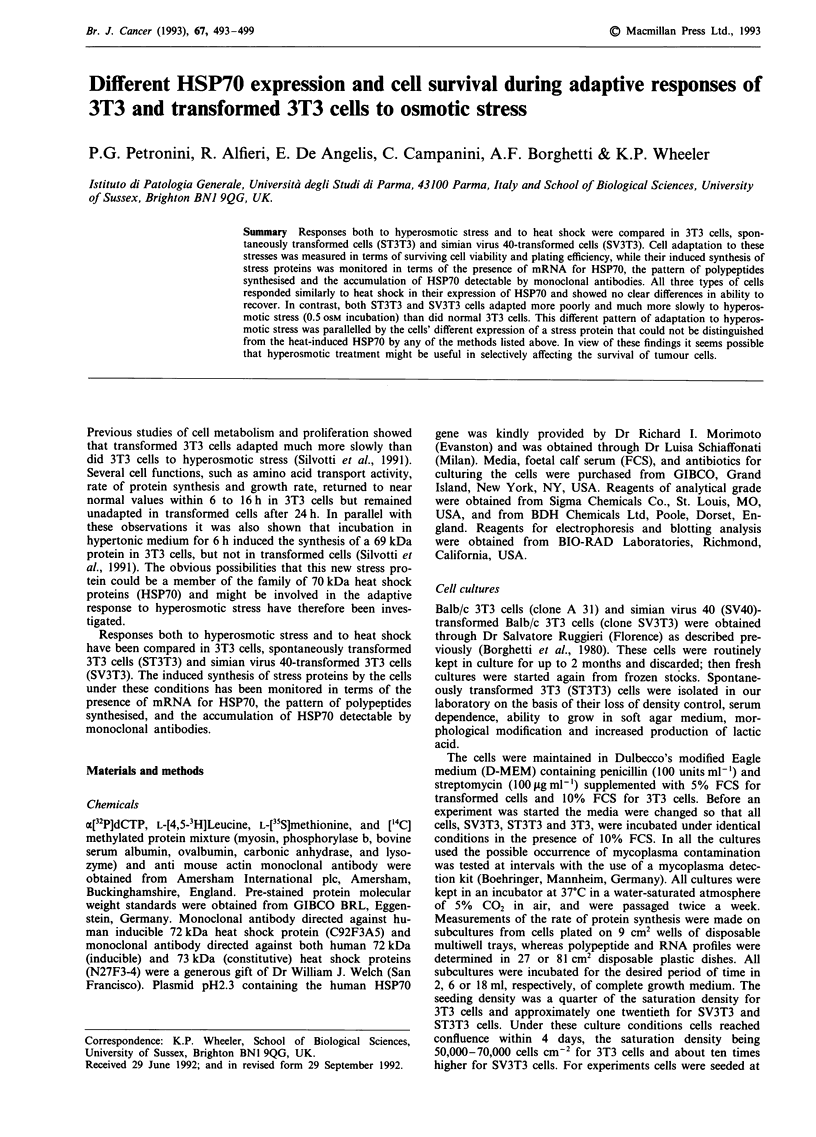
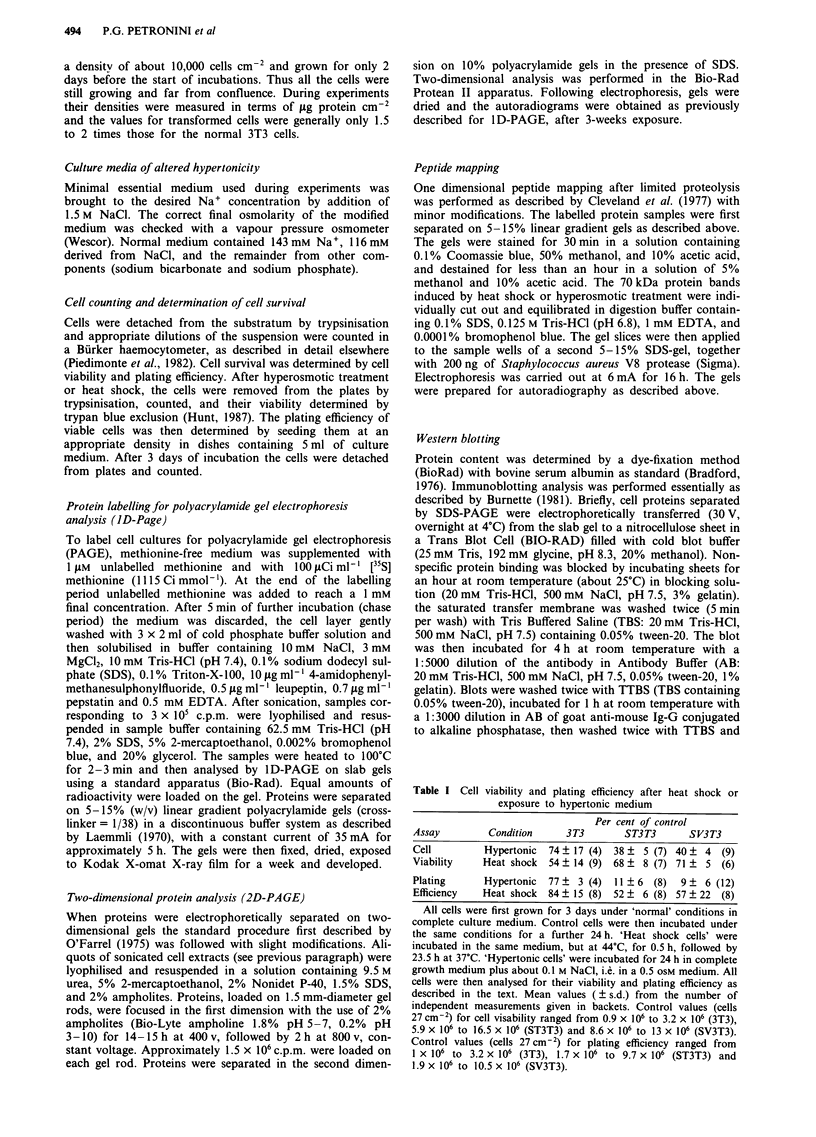

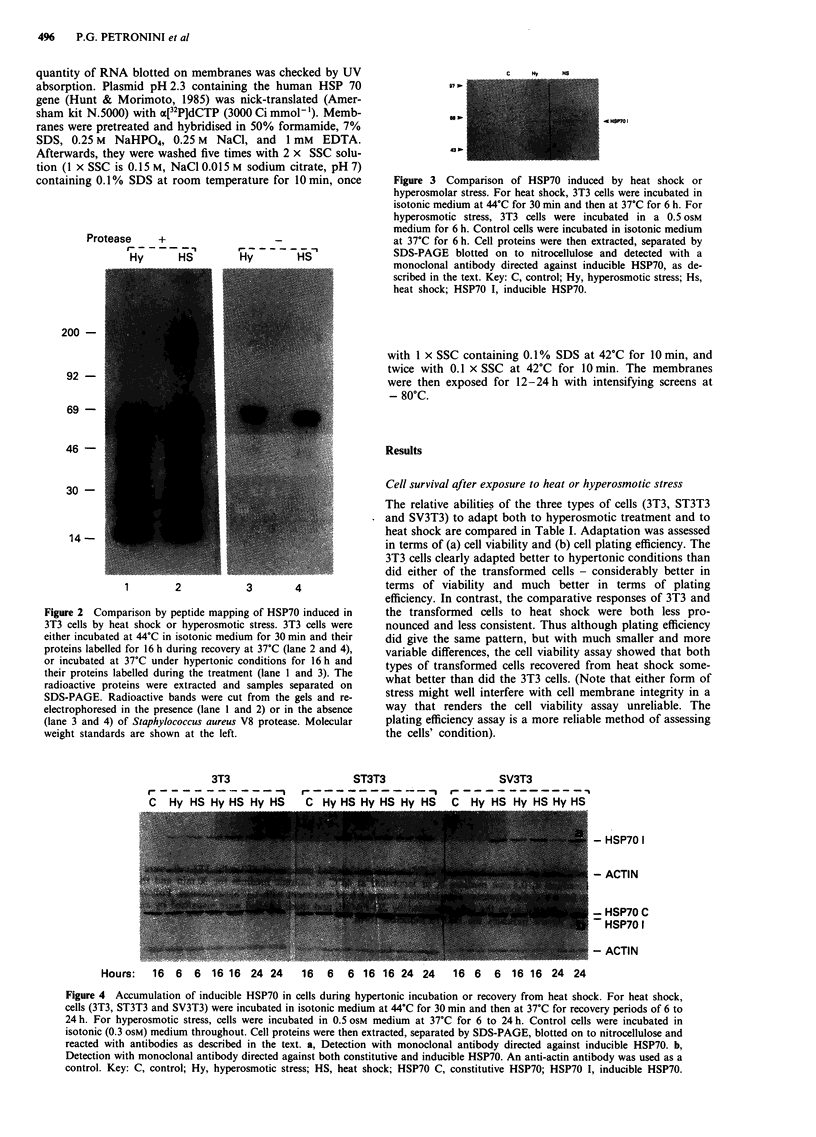
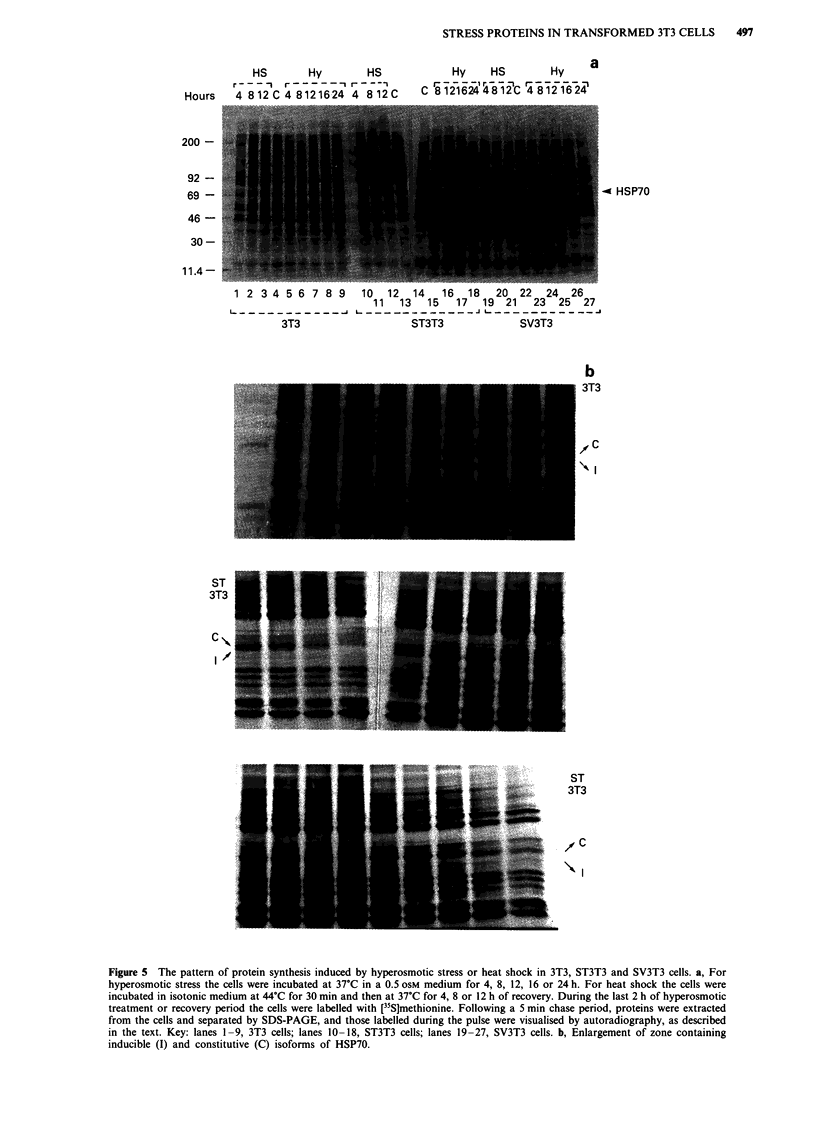
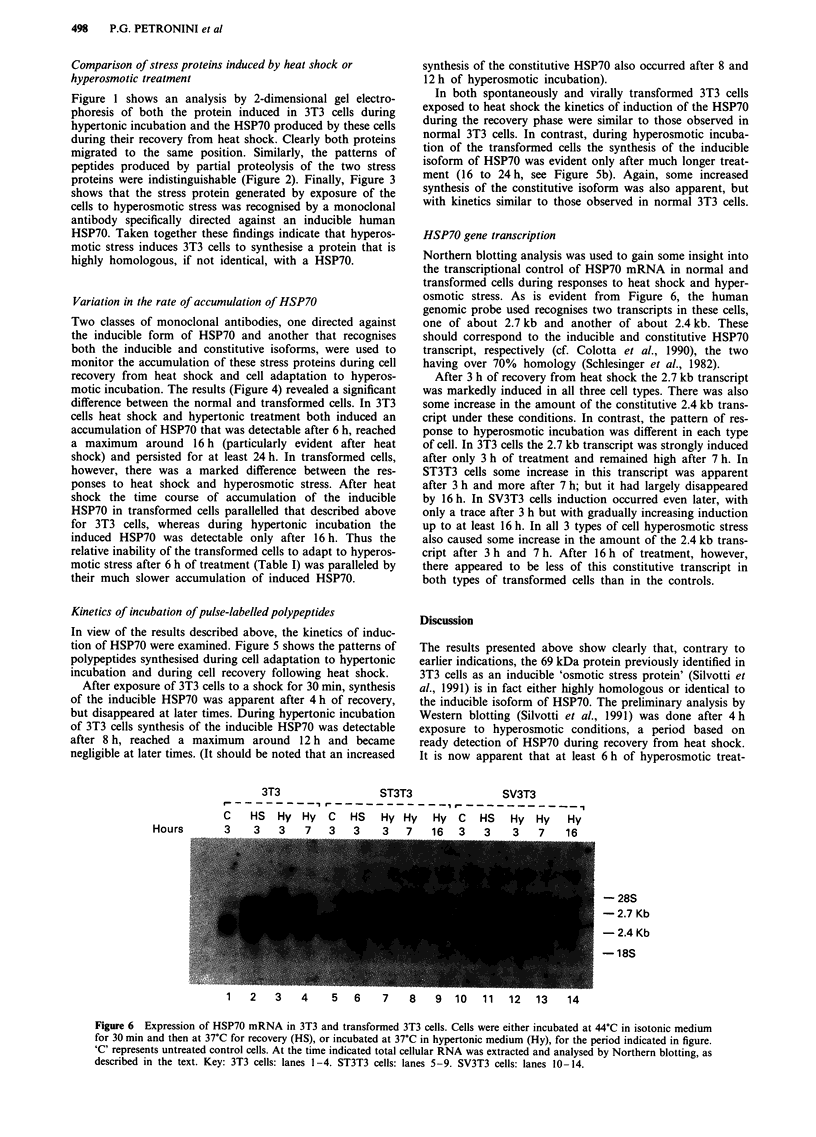
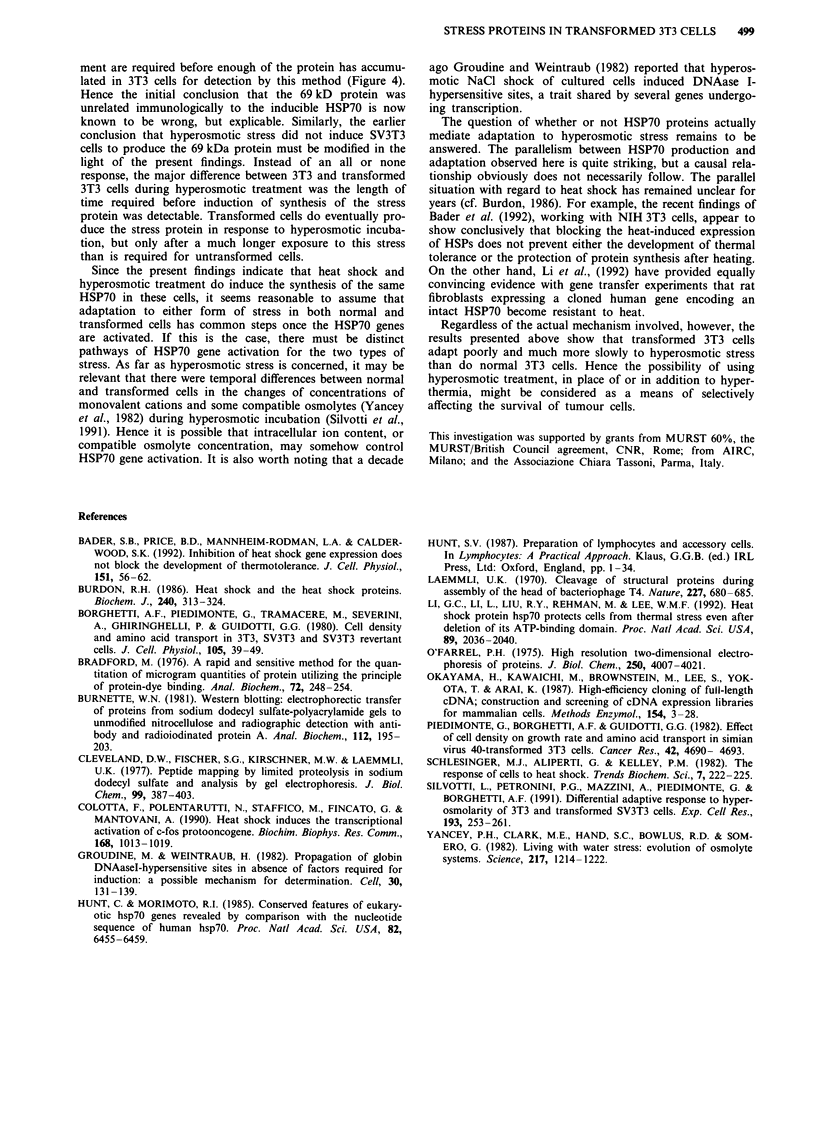
Images in this article
Selected References
These references are in PubMed. This may not be the complete list of references from this article.
- Bader S. B., Price B. D., Mannheim-Rodman L. A., Calderwood S. K. Inhibition of heat shock gene expression does not block the development of thermotolerance. J Cell Physiol. 1992 Apr;151(1):56–62. doi: 10.1002/jcp.1041510110. [DOI] [PubMed] [Google Scholar]
- Borghetti A. F., Piedimonte G., Tramacere M., Severini A., Ghiringhelli P., Guidotti G. G. Cell density and amino acid transport in 3T3, SV3T3, and SV3T3 revertant cells. J Cell Physiol. 1980 Oct;105(1):39–49. doi: 10.1002/jcp.1041050107. [DOI] [PubMed] [Google Scholar]
- Bradford M. M. A rapid and sensitive method for the quantitation of microgram quantities of protein utilizing the principle of protein-dye binding. Anal Biochem. 1976 May 7;72:248–254. doi: 10.1016/0003-2697(76)90527-3. [DOI] [PubMed] [Google Scholar]
- Burdon R. H. Heat shock and the heat shock proteins. Biochem J. 1986 Dec 1;240(2):313–324. doi: 10.1042/bj2400313. [DOI] [PMC free article] [PubMed] [Google Scholar]
- Burnette W. N. "Western blotting": electrophoretic transfer of proteins from sodium dodecyl sulfate--polyacrylamide gels to unmodified nitrocellulose and radiographic detection with antibody and radioiodinated protein A. Anal Biochem. 1981 Apr;112(2):195–203. doi: 10.1016/0003-2697(81)90281-5. [DOI] [PubMed] [Google Scholar]
- Colotta F., Polentarutti N., Staffico M., Fincato G., Mantovani A. Heat shock induces the transcriptional activation of c-fos protooncogene. Biochem Biophys Res Commun. 1990 May 16;168(3):1013–1019. doi: 10.1016/0006-291x(90)91130-k. [DOI] [PubMed] [Google Scholar]
- Groudine M., Weintraub H. Propagation of globin DNAase I-hypersensitive sites in absence of factors required for induction: a possible mechanism for determination. Cell. 1982 Aug;30(1):131–139. doi: 10.1016/0092-8674(82)90019-8. [DOI] [PubMed] [Google Scholar]
- Hunt C., Morimoto R. I. Conserved features of eukaryotic hsp70 genes revealed by comparison with the nucleotide sequence of human hsp70. Proc Natl Acad Sci U S A. 1985 Oct;82(19):6455–6459. doi: 10.1073/pnas.82.19.6455. [DOI] [PMC free article] [PubMed] [Google Scholar]
- Laemmli U. K. Cleavage of structural proteins during the assembly of the head of bacteriophage T4. Nature. 1970 Aug 15;227(5259):680–685. doi: 10.1038/227680a0. [DOI] [PubMed] [Google Scholar]
- Li G. C., Li L., Liu R. Y., Rehman M., Lee W. M. Heat shock protein hsp70 protects cells from thermal stress even after deletion of its ATP-binding domain. Proc Natl Acad Sci U S A. 1992 Mar 15;89(6):2036–2040. doi: 10.1073/pnas.89.6.2036. [DOI] [PMC free article] [PubMed] [Google Scholar]
- O'Farrell P. H. High resolution two-dimensional electrophoresis of proteins. J Biol Chem. 1975 May 25;250(10):4007–4021. [PMC free article] [PubMed] [Google Scholar]
- Okayama H., Kawaichi M., Brownstein M., Lee F., Yokota T., Arai K. High-efficiency cloning of full-length cDNA; construction and screening of cDNA expression libraries for mammalian cells. Methods Enzymol. 1987;154:3–28. doi: 10.1016/0076-6879(87)54067-8. [DOI] [PubMed] [Google Scholar]
- Piedimonte G., Borghetti A. F., Guidotti G. G. Effect of cell density on growth rate and amino acid transport in simian virus 40-transformed 3T3 cells. Cancer Res. 1982 Nov;42(11):4690–4693. [PubMed] [Google Scholar]
- Silvotti L., Petronini P. G., Mazzini A., Piedimonte G., Borghetti A. F. Differential adaptive response to hyperosmolarity of 3T3 and transformed SV3T3 cells. Exp Cell Res. 1991 Apr;193(2):253–261. doi: 10.1016/0014-4827(91)90094-b. [DOI] [PubMed] [Google Scholar]
- Yancey P. H., Clark M. E., Hand S. C., Bowlus R. D., Somero G. N. Living with water stress: evolution of osmolyte systems. Science. 1982 Sep 24;217(4566):1214–1222. doi: 10.1126/science.7112124. [DOI] [PubMed] [Google Scholar]




